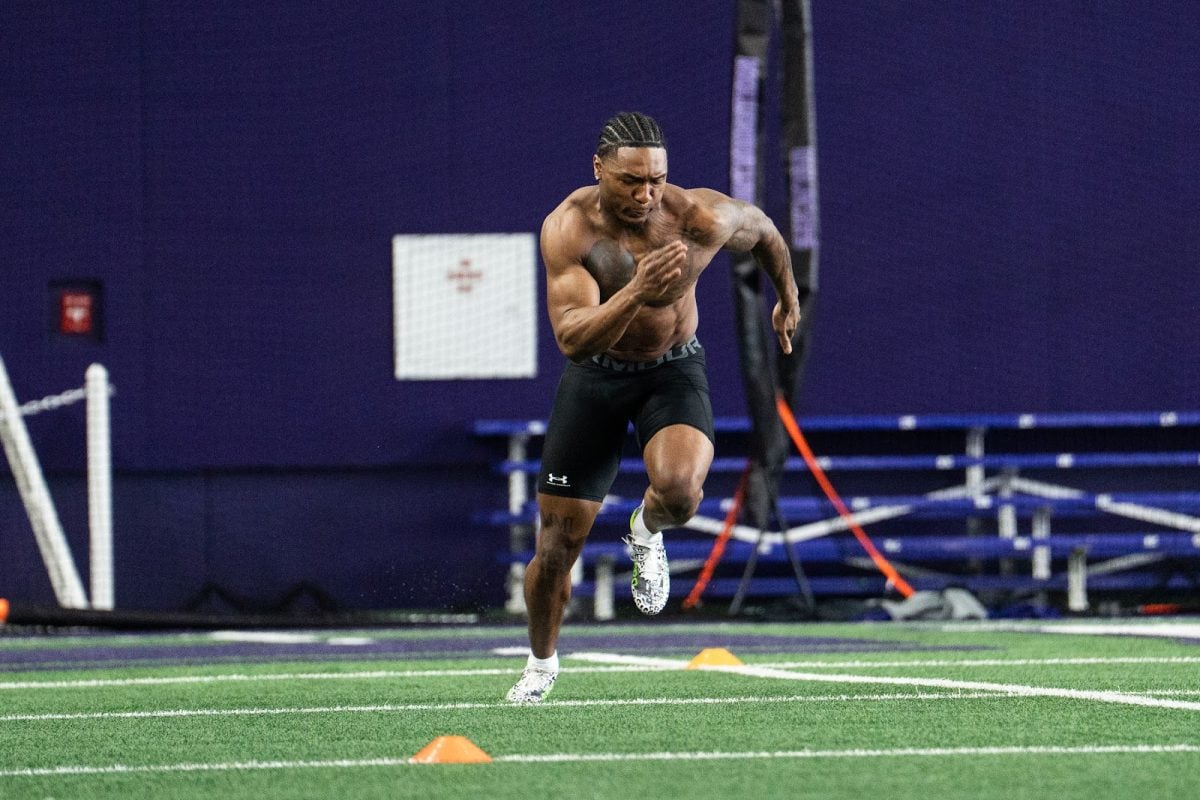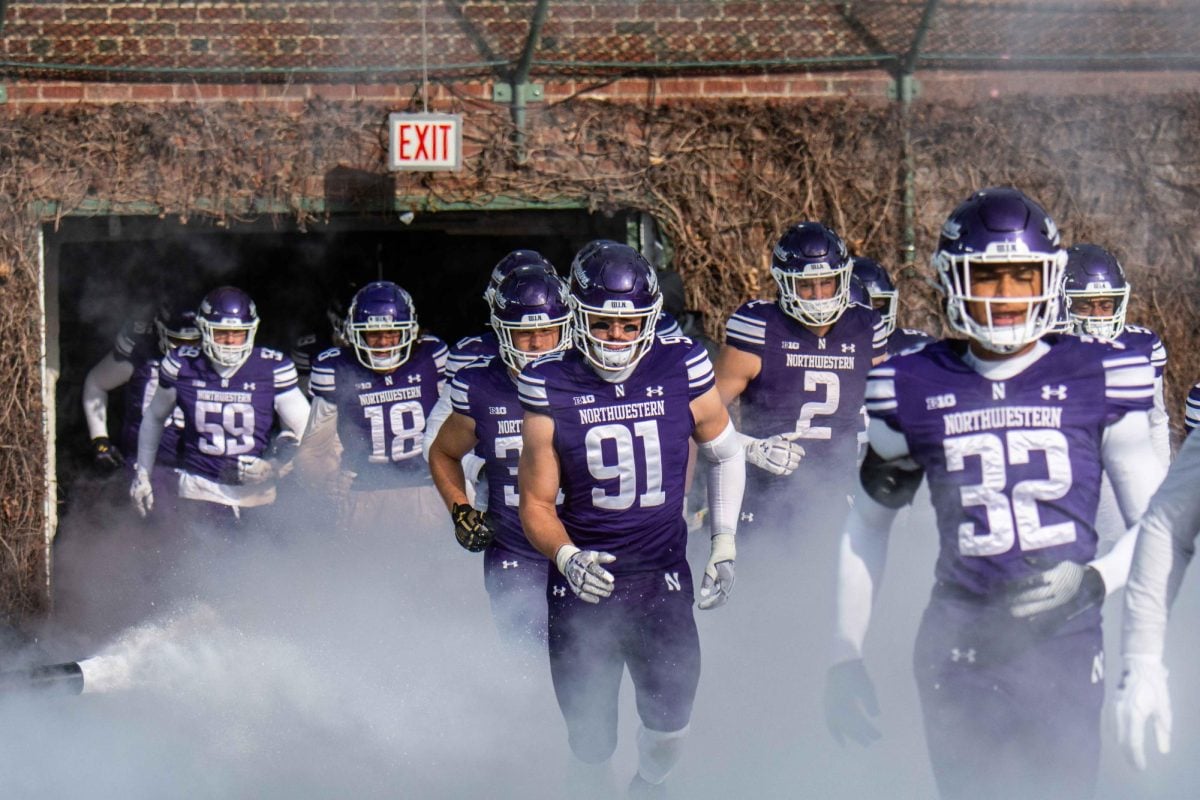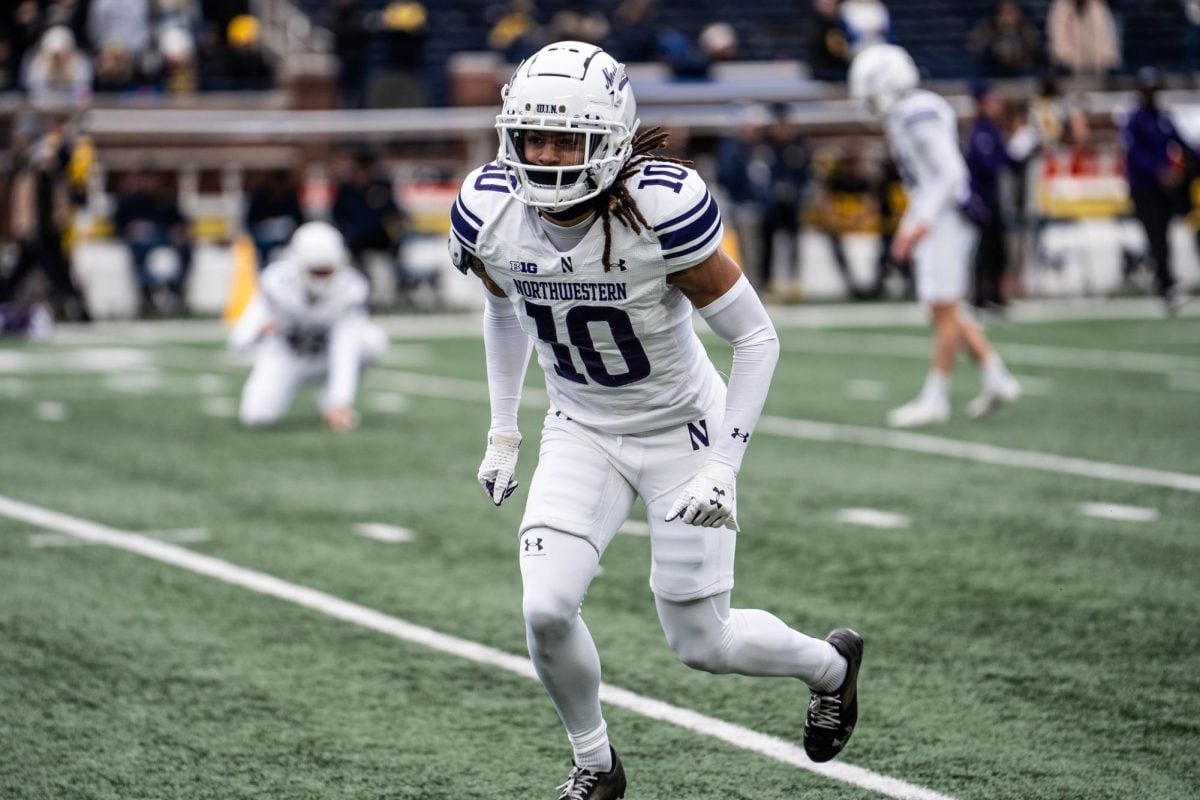Trying to summarize your feelings in 140 characters is difficult enough for your average nobody, let alone when the whole world is waiting for you to screw up.
Yet this is the atmosphere student-athletes live in on a daily basis in the 21st century. The NCAA has been late to the game with social media, and its policy on the medium has evolved rapidly and constantly. The athletic department also works to update student-athletes on the newest rule changes and make sure they are being interpreted correctly. This ever-changing landscape translates into a lot of slip-ups, but that is to be expected from such a young generation.
“Mistakes will be made because we’re dealing with 18- to 22-year-old people,”said Doug Meffley, athletic department director of digital and social communications.
The power of those 140 characters is evident in many recent examples from around the Big Ten. Already this season, players at Michigan State and Ohio State have caused a media firestorm with tweets. Most of these issues were dealt with internally, and Meffley said Northwestern has a protocol in place for such situations, although he could not elaborate on the details. He said it involves athletic department staff members, coaches and the compliance department, as well as other student-athletes.
Athletic director Jim Phillips told The Daily the each team’s coaching staff does most of the monitoring of student-athlete’s social media accounts. He said there are staff in the athletic department who deal with issues if any serious ones arise, but he stressed the department is not trying to be Big Brother when monitoring the accounts.
“Compliance doesn’t necessarily look at it as much as our coaches do,” Phillips said. “We have sports administrators for every sport that help oversee some of the programs, reviewing some of those things. We do it in a way that it’s fair and respectful and professional, and the student-athletes know they have the responsibility to do it within certain parameters.”
Regardless of the process, NU is proactive in trying to prevent newsworthy mistakes, because it takes only one irresponsible tweet to put the national spotlight on Evanston.
“Mistakes can absolutely happen anywhere, and that’s why we’re so proactive with our education,” Meffley said. “We’re just one mistake away from something like that to happening at our school.”
Training the brain
This year was the first time the NU athletic department brought in an outside agency to talk to its student-athletes about social media. The company talked about the basic dos and don’ts of the medium but also highlighted specific examples of the players’ tweets to show what is appropriate and what isn’t. Senior defensive lineman Bo Cisek said learning from embarrassment can be a great teaching mechanism.
“Once you see your own social media post on the screen and everyone’s laughing at you for being dumb about it, you really want to not have that happen to you again,” Cisek said. “It’s a pretty good way to learn, but it’s within your team, so it’s all in good fun.”
The meeting also discussed the increased scrutiny that surrounds student-athletes. Many of them don’t understand the higher expectations or how ill-advised social media usage can have consequences after school is done.
“It just gives our student-athletes a better idea of what social media means in the state of digital media,” Meffley said. “It’s something that a lot of people in that 18-to-22-year-old age group have grown up on, but I don’t know that sometimes they see the transition and how that affects them in the real world.”
Most of the players returned from the training session with positive feedback and said they learned a lot. They also said it reinforced some of the concepts they were already taught and practice.
“We put our student-athletes through so many meetings, especially when they first get here, because there are so many rules when you’re an NCAA student-athlete in Division I,” Meffley said. “This meeting in particular has been very eye-opening for them, and they’re appreciative of it.”
The appreciation stems from NU’s policy on social media, which is more lenient than many other schools in the country. Meffley said the department had no serious discussions about banning student-athletes from social media because NU wanted the student-athletes to create their own brands for their post-graduate careers. That can’t be said about some of NU’s other Big Ten counterparts.
Michigan coach Brady Hoke said at Big Ten Media Days in July he considered putting sanctions on his team’s social media habits. However, he said it wouldn’t help his players learn how to act properly in society, and it would be more of a hindrance than a help to ban social media.
“At some point our guys need to understand the ramifications,”Hoke said. “We’re trying to build men, guys who are going to graduate and be great husbands, fathers and community members. They have to learn responsibility. If you just say, ‘No, you can’t do it,’ I don’t know if you’re helping them learn responsibility, so it’s a double-edged sword in my opinion.”
The art of proofreading
The main takeaway from all the training sessions for the student-athletes is to proofread everything. For most players this has already become second nature, but some players, like Kyle Prater, say they think there isn’t a need to proofread a tweet because of their approach to Twitter. The junior receiver uses the medium to spread inspiration to himself and his followers.
“I know not to put anything out there that is going to hurt myself or the team,” Prater said. “I would never put anything out there that would hurt me, my character or my status.”
And then there are people like Cisek, who said he takes proofreading “very seriously.” The senior defensive lineman and punt protector is a generally jovial person, but even he admits he is a little bit rough around the edges. He said he proofreads everything he tweets to make sure he doesn’t accidentally post anything offensive.
The football team has a physical reminder of those meetings in their locker room with a poster of basic thoughts players should consider before using social media. One consequence that isn’t on the poster is how far tweets can travel in a short amount of time. After the Wildcats beat Iowa on Oct. 27, Cisek grabbed a lightsaber from the crowd and pretended to conduct the band in a rendition of “Go U Northwestern.” A photo of the moment was published and within three days, Cisek said, his girlfriend’s cousin in Afghanistan had seen the photo. Cisek said the speed with which the photo traveled gave him a new perspective on social media.
“It reinforces my beliefs about you’ve got to make sure about what you’re posting,” Cisek said. “I need to realize stuff can get that far that quickly, so I just have to keep an eye on it.”
Philosophical differences
There are many things that separate NU from its counterparts around the Big Ten and the country. Not the least is the athletic department’s commitment to being on the forefront of social media. Between campaigns like PersaStrong and Schedule Cards for Kevin, NU has found a way to turn ideas into life-changing projects. In addition, the football program created a website called The Wildcat Way, which links to all the social media the team produces.
The innovation has little to do with the size of the university but rather the spirit NU breeds. Meffley said NU’s culture gives the athletic department the freedom to be on the forefront of social media.
“Northwestern is on the cutting edge of social media because we’re on the cutting edge of a lot of things,” Meffley said. “It’s that mindset that we have as an university and an athletic department specifically that we need to be in front of the curve because that’s how we’re going to succeed.”
Being on the cutting edge also means NU gets more publicity and attention from the outside. The night of Sept. 8 exemplifies the power NU has on social media. The athletic department had the band spell out the department’s official Twitter hashtag, and the picture made rounds on the internet. The University of Missouri did the same thing less than 30 minutes earlier, but few people knew about it.
NU’s ability to spread stories quickly via social media has brought a positive response from fans. Meffley said he has not heard any critiques of the department’s social media attempts, which he credits to NU having good content to sell and being able to package it in an appealing way.
“Every initiative we’ve done social media-wise has been met with a lot of positive reaction and great fan interaction,” Meffley said. “It’s not just having these great ideas but also knowing how to spread that word virally and tap into our network.”













